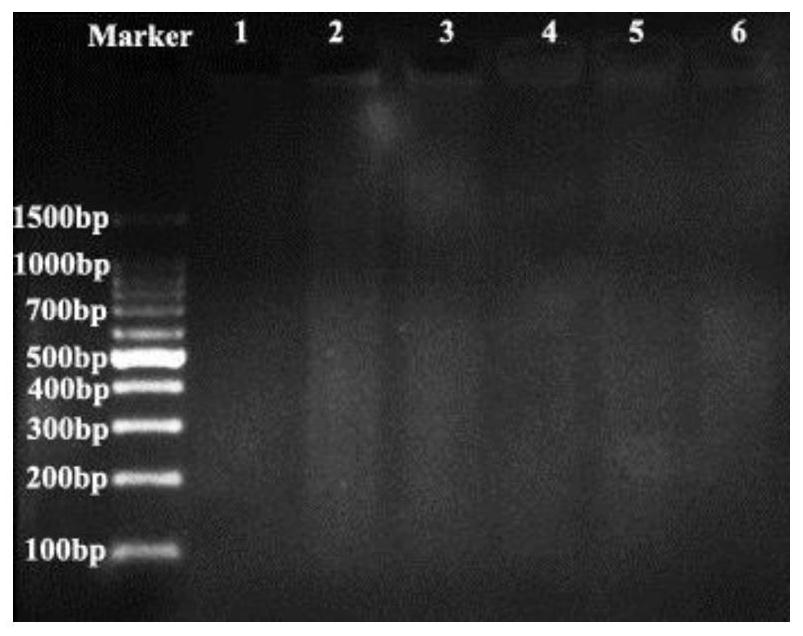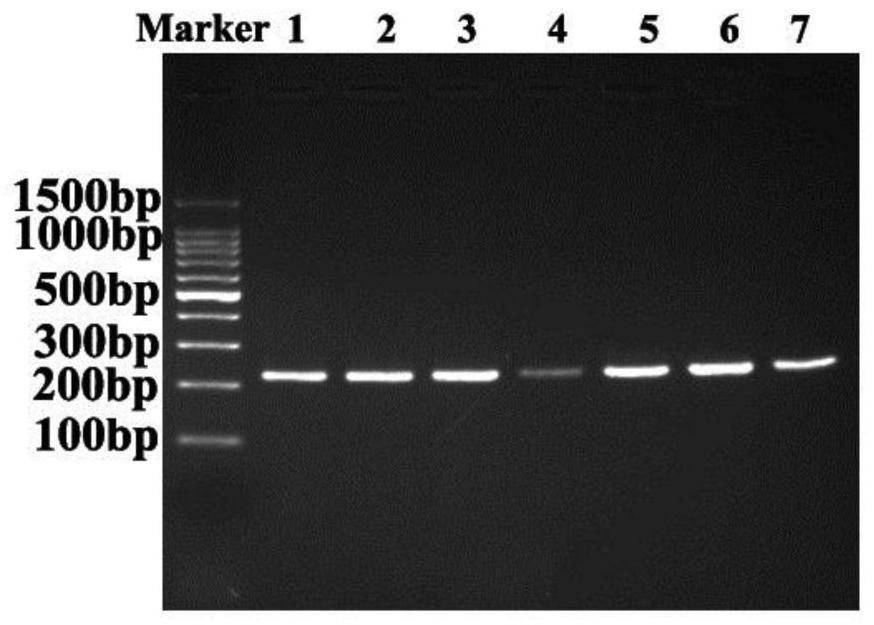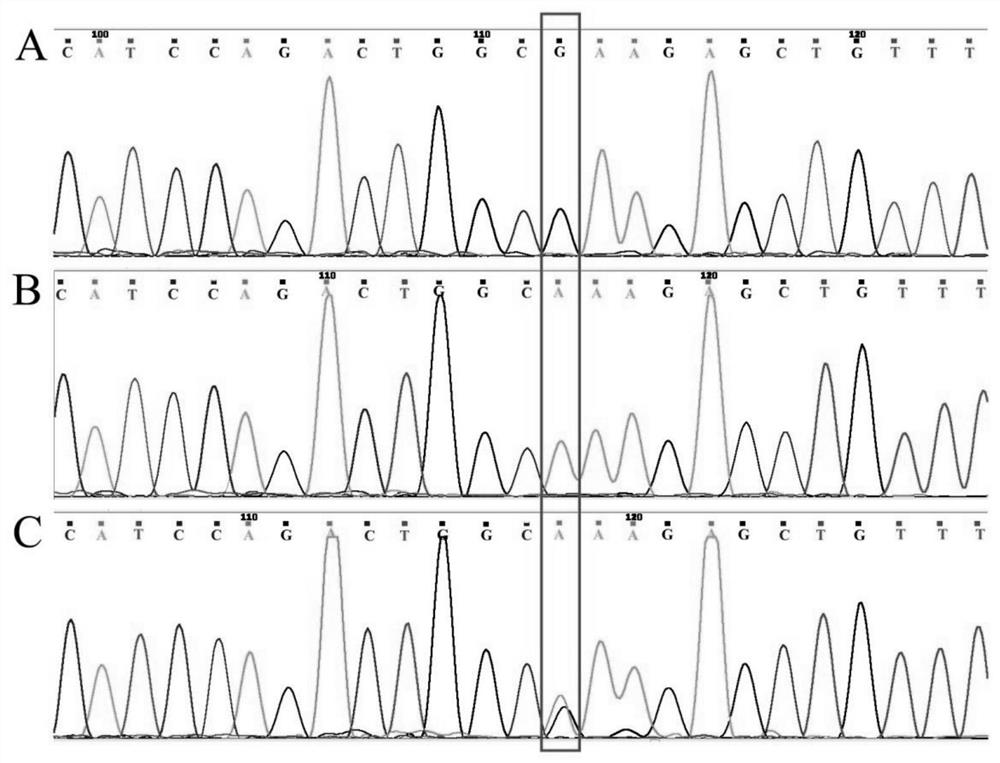Uveal melanoma metastasis risk prediction kit
A melanoma and risk prediction technology, applied in the field of disease molecular diagnostic kits, can solve problems such as unclear mechanism and relationship, and achieve the effect of predicting the risk of metastasis and excellent application prospects
- Summary
- Abstract
- Description
- Claims
- Application Information
AI Technical Summary
Problems solved by technology
Method used
Image
Examples
Embodiment 1
[0032] Embodiment 1 PCR detection of the present invention and sequencing kit composition
[0033] The kit of the invention includes amplification reagents for amplifying the p.E725K mutation site of the EZH2 gene and reagents for Sanger sequencing.
[0034] 1. Amplification reagent
[0035] The PCR amplification reagent is used to amplify a DNA sequence where the SNP site is located, and its composition is shown in Table 1.
[0036] Table 1 PCR amplification reagents
[0037] components concentration volume PCR mix 2× 600μl Primer pair 10μM 100μl pure water 2ml
[0038] The PCR mixture in Table 1 includes Taq enzymes, dNTPs, magnesium ions and other components required for conventional PCR; the primer pair information is shown in Table 2.
[0039] Table 2 Primers used for gene amplification
[0040]
[0041] 2. Sequencing reagents
[0042] The reagent includes the components shown in Table 3.
[0043] Table 3 Reagents for dete...
Embodiment 2
[0047] Embodiment 2 The using method of kit of the present invention
[0048] 1. DNA extraction
[0049] The paraffin blocks of UM patients were extracted and sliced, 5-10 μm thick, 5-6 slices. Use a scalpel to scrape off the tumor tissue on the section, try to scrape only the target tissue part, and remove excess paraffin. Collect the scraped tissue into a 1.5mL EP tube, add 1mL xylene and shake to mix well. After fully dissolving the paraffin, centrifuge at 12000rpm for 2min at room temperature, and discard the supernatant. Add 1ml of absolute ethanol, shake and mix well, centrifuge at 12000rpm for 2min at room temperature, and discard the supernatant. Open the tube cap and dry at room temperature or 37°C for 5-10 minutes to completely remove residual ethanol. Add 200 μl lysis solution and 20 μl Proteinase K, mix thoroughly, and incubate at 55°C until the sample is completely lysed. Place in a 90°C water bath and incubate for 1 hour, add 200 μl of buffer solution and 200...
experiment example 1
[0069] Experimental example 1 Relationship between UM transfer and p.E725K mutation
[0070] 1. Selection of Experimental Subjects
[0071] From 2009 to 2017, West China Hospital of Sichuan University collected 85 primary UM patients, among which 19 cases had UM cell metastasis within 5 years of illness, and 66 cases had no UM cell metastasis within 5 years of illness. The rate is 22.35%. The specific clinical case parameters are shown in Table 7.
[0072] Table 7 Clinicopathological parameters of 85 UM patients
[0073]
[0074] 2. Sequencing
[0075] Using the method in Example 2, the p.E725K mutation site of the EZH2 gene of the subject was sequenced.
[0076] 3. Sequencing results
[0077] The results showed that the p.E725K mutation site existed in the EZH2 gene of the experimental subjects, and the mutation rate was 41.2% (35 / 85). Among the patients with UM cell metastasis within 5 years of illness, 13 cases carried the p.E725K mutation (transfer The total numbe...
PUM
 Login to View More
Login to View More Abstract
Description
Claims
Application Information
 Login to View More
Login to View More - R&D
- Intellectual Property
- Life Sciences
- Materials
- Tech Scout
- Unparalleled Data Quality
- Higher Quality Content
- 60% Fewer Hallucinations
Browse by: Latest US Patents, China's latest patents, Technical Efficacy Thesaurus, Application Domain, Technology Topic, Popular Technical Reports.
© 2025 PatSnap. All rights reserved.Legal|Privacy policy|Modern Slavery Act Transparency Statement|Sitemap|About US| Contact US: help@patsnap.com



